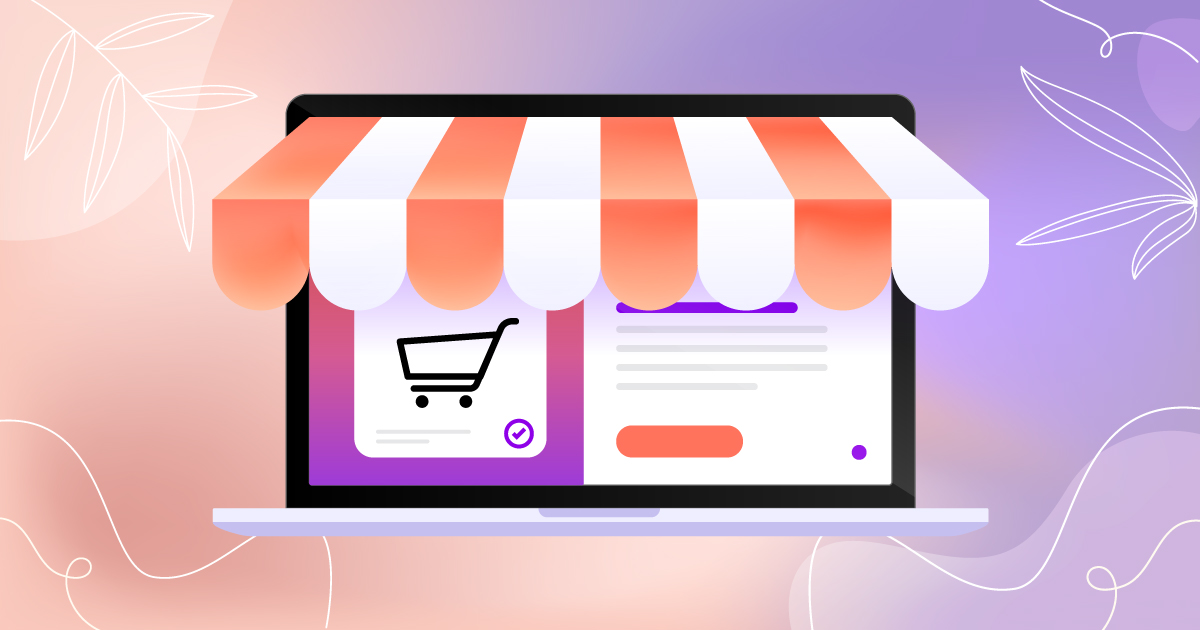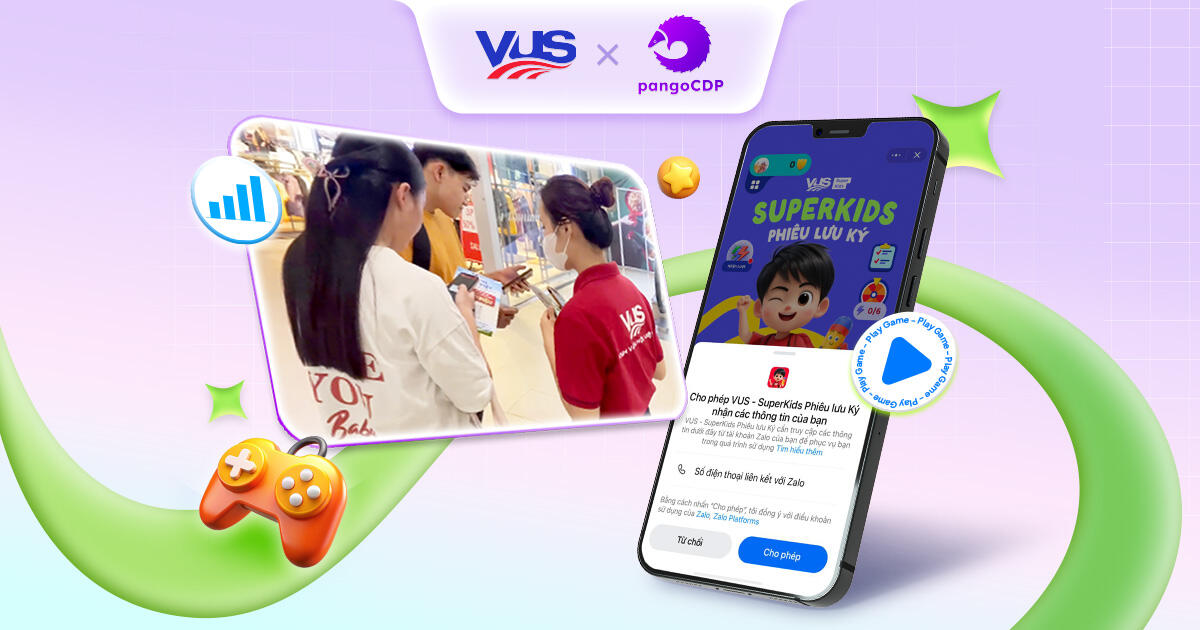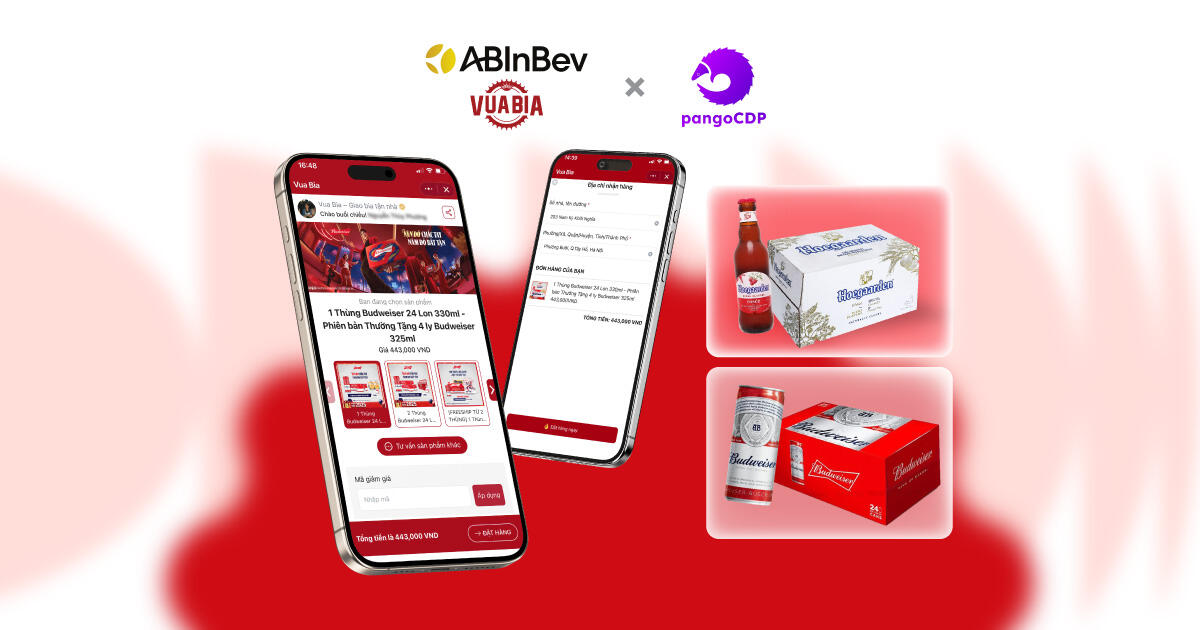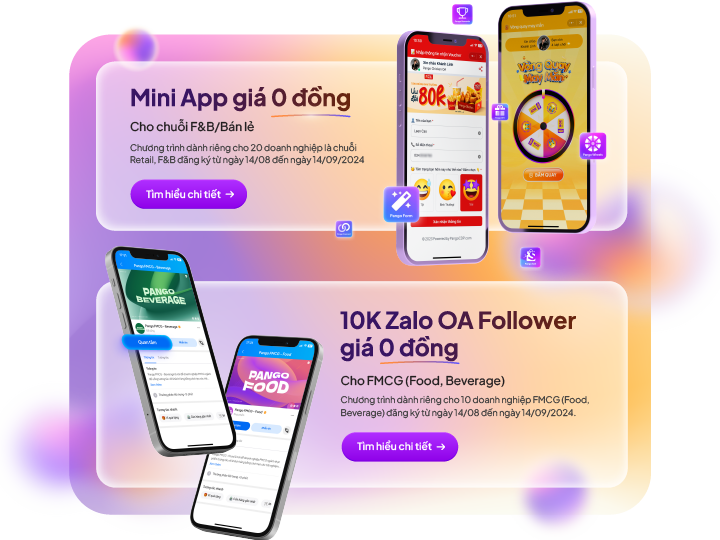Don’t forget how much your business has invested in bringing customers to your website and enticing them to add products to their cart. It’s a pity if they leave when it’s just one click away from making a purchase. It’s time to take these abandoned carts seriously!
Current status of “Abandoned Cart”
Abandoned Cart is not a new concept. Today, with the growth of e-commerce, this concept has become popular.
The goal of e-commerce is to make sales. However, customers do not always complete the payment of all the carts they create. their purchase at some point. This is what we call an abandoned cart.
According to Statista, the global average abandoned cart rate always fluctuates around 70%. For specific industries like restaurants, hotels or tourism, this rate can exceed 80%.
This means that for every 10 carts created, only 3 are actually completed. The remaining 7 carts are abandoned.
The truth behind the “Abandoned Cart”
The abandoned cart rate is an important business metric for retailers to track. It is closely correlated with customer conversion rates and revenue.
A high abandoned cart rate is a common indicator of the difficulties in the purchasing process or a poor customer checkout experience.”
Causes & Solutions to “prevent” Abandoned Cart
Don’t forget how much your business has invested in bringing customers to your website and enticing them to add products to their cart. It’s a pity if they leave when it’s just one click away from making a purchase. It’s time to take these abandoned carts seriously!
Let’s review the reasons why customers abandon shopping carts with PangoCDP and how to fix them:
Hidden costs
Hidden costs are at the top of the reasons why customers refuse to pay for shopping carts. It can be a tax, shipping fee, surcharge, etc. They have one thing in common that is ”hidden” during the shopping process and only really appears when the Customer presses the payment button. This creates a slight shock, enough for customers to refuse to pay their shopping cart.
At this point, You will probably ask the question: ‘So why not show it all?’
The reason for hiding a few costs seems to give the business’s product an advantage in the price race. This is reasonable in case the customer compares the price. Competitive prices will cause the cart creation rate to increase. However, it also increases the cart abandonment rate when hidden costs start to show up.
Solution:
Hide the extra cost if you want to be competitive on price. Consider adding clearly showing these hidden costs to customers before clicking the payment button. Make sure that the price the customer sees before pressing the payment is the final price they must pay.
Delivery fee
Shipping time and price play an important role in the customer’s decision to buy or not.
One reason for skipping the shopping cart is that many websites tend to wait until the shopper is ready to check out to show the actual shipping cost. This can sometimes ruin the customer’s shopping experience. It distracts them and causes them to lose interest in the products they’ve just added in their cart.
Solution:
- Diversify delivery options, allowing customers to choose the right one. Some customers want cheap fees. Others care about speed and convenience.
- Instead of announcing a fixed delivery price, make this fee flexible based on the order value. You can also create a reminder for customers to purchase more to qualify for free shipping.
- If possible, ”Free Delivery” is always the best choice.
Interface on mobile devices
Smartphones are quickly taking center stage in the e-commerce field. Meanwhile, some businesses have not yet paid attention to the mobile shopping interface. Therefore, the rate of ignoring orders from phones is also significantly higher than that from desktops.
Solution:
Optimize the mobile interface and shopping experience. This is evident because it will help you retain more customers.
Payment process
Sometimes customers shop and are at the step of entering payment card information. Then they suddenly realized: It seems that I haven’t chosen the size of the shirt, or don’t remember if I entered enough delivery address information? … Returning to check this information sometimes creates new shopping carts in an unwanted way.
Solution:
- Design the checkout process into clear, step-by-step stages. Allow customers to move between steps flexibly.
- Create an order summary screen that customers can see no matter which step they are in the checkout process.
Register as a member before making a purchase
Don’t ask for too much customer information before they buy from you!
Some websites require customers to register as members before making a purchase. This is also a reason why customers abandon their carts. Customers just want to shop! They don’t want to remember another username or set a complicated password.
Solution:
Make membership registration optional. Customers can choose to register if they want additional benefits. Or they can simply buy and leave.
Return policy
Have you ever experienced a feeling of regret right after buying something? Definitely yes, isn’t it! Some people even feel it right before paying:
- Will my girlfriend fit into this dress?
- Will I be free to use this travel ticket on that date?
This immediate fear causes customers to abandon their carts.
Solution:
If you have a return policy, don’t hesitate to make it as clear as possible to customers before they press payment.
Note: Avoid using phrases like “You must” or “We are not responsible for…”. Instead, use “You only need to” or “You can…”.
Payment method
Imagine how customers feel if they have to open their wallets, pull out a card, and enter card details for a small value item. Most of them will stop at this step!
Sometimes, customers choose to pay because they see a familiar and trusted payment method. Or simply because have money available in that e-wallet.
Solution:
Diversify payment methods: Credit cards, e-wallets, bank transfers, cash…
Note: Ensure no errors occur during the payment process.
Customers forget the shopping cart
Sometimes the reason for an abandoned cart is simply that customers forget about them. They exit the order interface to see another product. Or switch to another website to compare prices, etc.
Solution:
A small suggestion to fix this: Show a notification window every time the customer wants to leave the page. Remind them about their cart or suggest they save the cart before leaving.
What to do with forgotten carts?
It’s undeniable that even if you have a quality product system, good pricing policy, or a super smooth ordering interface, customers will still forget their carts. This happens for reasons beyond your control.
That’s okay, let’s set aside the effort to prevent cart abandonment. PangoCDP will suggest steps to handle forgotten carts and bring customers back to complete their purchases.
Abandoned carts provide lots of valuable information
Here’s some good news you may not realize. Abandoned carts give you more information about customers than any lead form on your website.
That’s right! An abandoned cart can tell you about the customer’s age, gender, preferences, and even shopping habits.
Therefore, it is essential to keep detailed statistics on abandoned carts. Track them by several criteria:
- Total number of abandoned carts (morning, afternoon, day, week, month, etc.)
- Shopping cart information (total order value, number of items, type of products, etc.)
- Customer information (age, gender, location, habits, behavior, interactions with the website, etc.)
- Device customers used when the cart was abandoned (computer, iPad, phone)
- Times when cart abandonment frequently occurs (end of promotion, product price increase, etc.)
- Step at which the customer abandoned the cart (selecting items, checkout, entering card information, etc.)
- Payment method.
With detailed statistics, you will discover many interesting things and know what to do to retain customers.
Example: Customer A always visits your website whenever a new iPhone model is released. After viewing and searching for products, they leave a few carts for pink iPhones but never complete a purchase. Thus, it’s easy to see that Customer A is an iPhone fan, isn’t it? So, why did A abandon the cart: price, delivery, or payment? What will happen if we send them a discount voucher for a pink iPhone to remind them of their forgotten cart? Or a message before the next iPhone launch?
Segmenting customers with Abandoned Carts
Once you have detailed statistics on abandoned carts, you will easily recognize common traits among these customers. Group them into smaller segments:
- Repeat customers who have purchased multiple times.
- First-time visitors to the website.
- Customers who abandoned carts at the checkout step.
- Segment by gender, location, age, etc.
- Customers who abandoned high-value carts.
- Customers with email, Zalo, or Facebook interactions with you.
The process of segmenting customers will give you a clearer view of their behavior as well as the reason why they left the order. From there, you will have specific interaction methods for each group. This is especially important because it helps you save costs and significantly increases the efficiency of bringing customers back.
“Right person, right time, right method.”
Build interaction scenarios with customers who abandoned carts
You can search the internet for the keyword “what to do with abandoned carts.” There will be many answers to guide you on what email you send, how to write the subject lines, and what content to include. However, according to PangoCDP, don’t rush into those things. First of all, think about what you will do with each segmented customer group.
Visualize detailed scenarios you will use and outline all the steps if necessary:
- When to start reminding customers about their forgotten carts (after 2 hours, after 1 day, etc.)
- Which interaction channel to use for which customer group (email, Zalo, SMS)
- The message you will send to each customer group.
- How will you collect customer interactions from different channels?
- What will you do next if customers respond well or don’t interact?
- Continuously segment customers by behavior and determine the next scenarios.
- …
Detailed scenarios will help you implement them more easily. Besides, you will calculate the cost for each campaign and balance your marketing budget.
Below is an example of an automated email reminder scenario for customers with abandoned carts.
With this scenario, you can check the last step: ”Customers buy”. And even more detail, where exactly do they buy? Online or in-store?
(*) For customers labeled as “Not opening emails,” “Not clicking,” and “Not purchasing,” marketing can design additional scenarios to prompt these customers into action.
Select interaction channel
Your customers are diverse. Therefore, you should diversify interaction channels to gather as much customer feedback as possible.
When it comes to abandoned carts, email is often the first choice. This is understandable because email provides enough space for businesses to fully showcase product information that customers missed. Such as: Images, prices, offers… For example, images, prices, offers, etc. This is particularly important as it directly stimulates and brings customers back to their initial purchase intent.
Some notes when using email:
- Consider using Sendinblue, SendGrid, or MailChimp. These are reputable email services with free options.
- Design emails to display well on mobile devices.
SMS, Zalo ZNS, Viber
Businesses don’t always collect customer email data. Most customers only want to provide their phone numbers. In that case, interaction channels like SMS are indispensable.
Some notes for you:
- Work with service providers rather than directly with the telecom carrier. This saves you time and possibly costs. Service providers will support you with the entire process, paperwork, and registration for Brand Name, message templates, and approval. You can refer to services from VietGuys, FPT, or VMG.
- Since message length is limited, using shortened links in messages is necessary. You can refer to Google’s FireBase Dynamic Link service.
FaceBook, Zalo OA
Most of your customers use social media. So don’t forget to utilize social media interaction channels. You can do a lot with these channels.
Message design to remind forgotten Carts
Design the right messages for each segmented customer group. Solve the specific problem they encountered when abandoning the cart.
For high-value orders: Consider offering free shipping or vouchers to bring customers back.
For loyal customers: Introduce related items for cross-selling, upselling, or suggesting similar products.
Some notes for you:
- Clear subject lines and personalized messages are essential. They help increase email open rates and clicks.
- Include necessary actions: Return to cart, purchase, etc.
- Use link tracking to measure customer interactions and conversion rates.
- Clear shipping costs.
- Attach positive reviews from other customers.
Statistics of results & method improvement
Sending emails to customers after a certain time since they abandoned their cart is a common concern for many businesses. Sending too early may seem too pushy, devaluing the product. Sending too late may cause customers to lose interest in the product.
The only correct answer to this is experimentation. Each product or service has its own logic. Only through sufficient experimentation will you find the most suitable answer for your case.
Therefore, the effective statistics of the campaign to pull customers back to the abandoned carts is very necessary and must be done continuously. You must understand which group of customers your approach was successful with, where it failed, and continually refine scenarios to improve effectiveness.
PangoCDP’s solution
Now you see there’s a lot to do with abandoned carts, right? If you only use the built-in email tools provided by e-commerce platforms, you will surely miss out on many potential customers. Hiring an agency to do all of the above steps in detail costs a lot of money and human resources. Is this something you’re worried about?
To solve this problem, consider PangoCDP’s solution – a powerful customer data platform from PangoCDP.
What is PangoCDP?
PangoCDP is a platform that helps consolidate all customer information. From personal details to behavioral data and customer touchpoints with the business. Here, all customer interactions from viewing products, adding products to carts, forgetting carts, receiving reminder emails, and subsequent interactions are systematically recorded. As a result, you will have an overview of the customer journey.
Powerful Customer Segmentation Tool
With PangoCDP, marketers can build customer segments that match the campaign goals on their own. With just a few steps, marketers can take full control without relying on other departments. These Customer files are always updated to the latest to minimize deployment time as well as data synchronization across multiple interaction channels.
Digital Marketing Automation
PangoCDP provides Digital Marketing Automation features to help marketers freely express their ideas. They can design, test and improve their marketing campaigns with ease. Not only for cart reminder campaigns, but all customer care campaigns can be easily managed on PangoCDP.
Multi-channel Connection
PangoCDP comes with over 20 integrations to the most popular digital channels. PangoCDP helps free marketers from dependence on service providers. From now on, marketers are completely proactive in interacting directly with customers.
In-depth Reporting
PangoCDP provides in-depth reporting systems from marketing to sales, helping businesses to strictly control the effectiveness of each campaign. This forms the basis for businesses to continuously improve and enhance customer care quality.
Accompanying Business
Not only providing the platform, the PangoCDP team of advisors and implementation will accompany the businesses throughout the execution process. PangoCDP experts will help businesses decode data, propose segmentation strategies, and improve customer experience.








